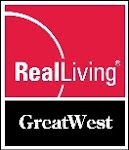Say you have a decent amount of money in the bank and don’t just want it sitting there. You want to have your money work for you, so you need to invest it. When it comes to investing, there are pretty much limitless possibilities. You can invest in stock, mutual funds, bonds, cash deposits (CDs), commodities (gold/oil), collectibles, and many others. Now, if you have a substantial amount of savings and a decent credit score, investing in real estate may be your best option.
When it comes to investing in residential real estate, there are three basic options. First, you can do what’s called “flipping”, where you purchase a home that needs substantial amount of repairs and/or renovation. You then have the repairs done and try and sell the home for profit. The second option is to purchase a home, rent it out, and then sell it once it value has appreciated enough to turn a profit. Finally, you can purchase an apartment building, and use the rents to generate income. Investing in an apartment building requires much more capital and knowledge of property management than the first two and therefore, I will save it for a later post.
Ok, now you need to choose between a rental investment and flipping. There are pros and cons to both. One of the major benefits to flipping is the quick turnaround. You buy the house, fix it, and then sell it asap. This is good when you are looking for a way to make 15% or as high as 50% return in under a year. But, there is also a high amount of risk involved. There is often an underestimation of the costs of all the necessary repairs. Buying a home and renting it out tends to be a little less risky, but it takes longer to see the return. However, this type of investment does not require as much cash as flipping does, because you can use the rents to offset the mortgage payments. Both types require a good amount of work, by the investor, but in different ways. With flipping, you need to make sure all the work gets done well and in a timely manner, where the other type requires handling tenants or finding a property manager to do it for you.
So now, let’s talk about what you should be looking for in these types of properties. When looking for a property, regardless of whether it is to fix and flip or hold, there are a few things you need to keep an eye out for. You want to make sure the property is in well-established area. This is because newer developments tend to have more price fluctuation verses older neighborhoods. Another important aspect is the school system. The quality of the schools in an area greatly affects the demand for housing and because you plan on selling the property, you want it to be as marketable as possible. Remember, if you plan on renting the property, there are going to be people living at the house (probably a family) so a good school district is not just important for selling the house, but finding quality renters as well. Finally, you need to keep an eye out for properties with a low price to square food ratio, when compared to other properties in the area. These will tend to give the highest rate of return.
This is just a brief explanation on types of investment properties. I will go into detail about evaluating each type of property in later posts. If you have any comments or questions you would like answered, don’t hesitate to leave them below. Who know, your question might be my next blog post.
Hope everyone had a great Thanksgiving. See you next week.



No comments:
Post a Comment